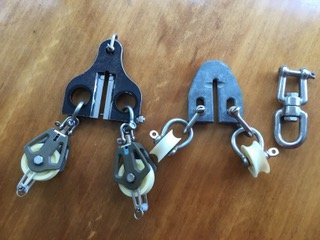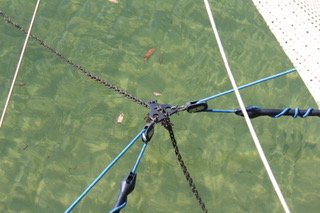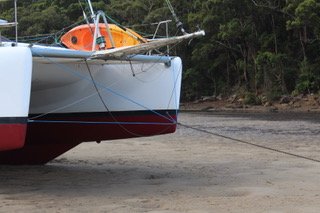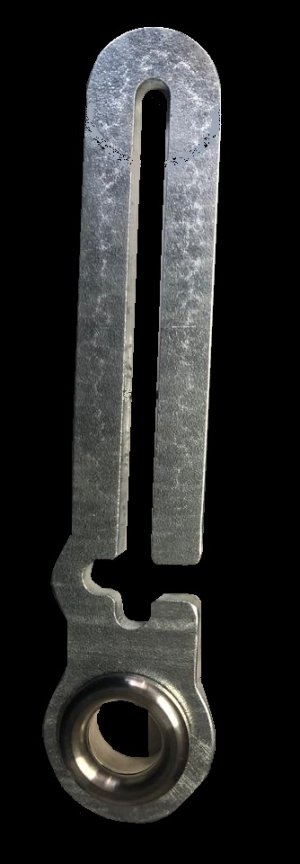Neeves
Well-known member
My bridle plate for a catamaran bridle is a simple plate within which are retained 2 threaded low friction rings.
Like this:
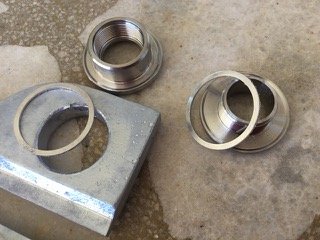
and this:
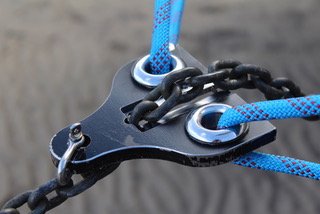
The idea is to allow the bridle to be extended when the weather worsens. The bridle plate works well, or I think so.
The LFRs have the snubbers doubling back on themselves, apparently bad for any cordage. I want to extend the neck, the threaded part, but retain the rings tightly in the plate and I thought to have thick gaskets between the two halves of the LFRs, - in the first picture the LFRs are kept tight with washers - I want to replace the washers with something with a bit more meat and with some elasticity.
The question is how can I make gaskets of the size for my LFRs (which are custom made) but of variable thickness to test out my idea(s).
I can make gaskets from Sikaflex of any thickness by making a sandwich between 2 plates (Sika being the filling) and vary the thickness with spacers and then cut to a rough circular shape.
What can I use as a peel coat to allow me to cleanly remove the top and bottom plate of my sandwich within which I squeeze the Sika?
Grease proof paper, cling film......?
The ideal would be to redesign the whole device and make the LFRs integral to the plate, all one piece - but that is more expensive (or I have not found a cheap way of doing it).
The concept is you can make your own at home. You simply need a bit of 316 stainless an angle grinder and something to bore out the holes. You can buy the LFRs off the shelf, Allen Bros in Essex (so drill the holes to match your supplier). The grey one is made from an HT steel so then needs galvanising, the black one is actually duplex stainless (no need for galvanising). The LFRs are 316.
Jonathan
Like this:

and this:

The idea is to allow the bridle to be extended when the weather worsens. The bridle plate works well, or I think so.
The LFRs have the snubbers doubling back on themselves, apparently bad for any cordage. I want to extend the neck, the threaded part, but retain the rings tightly in the plate and I thought to have thick gaskets between the two halves of the LFRs, - in the first picture the LFRs are kept tight with washers - I want to replace the washers with something with a bit more meat and with some elasticity.
The question is how can I make gaskets of the size for my LFRs (which are custom made) but of variable thickness to test out my idea(s).
I can make gaskets from Sikaflex of any thickness by making a sandwich between 2 plates (Sika being the filling) and vary the thickness with spacers and then cut to a rough circular shape.
What can I use as a peel coat to allow me to cleanly remove the top and bottom plate of my sandwich within which I squeeze the Sika?
Grease proof paper, cling film......?
The ideal would be to redesign the whole device and make the LFRs integral to the plate, all one piece - but that is more expensive (or I have not found a cheap way of doing it).
The concept is you can make your own at home. You simply need a bit of 316 stainless an angle grinder and something to bore out the holes. You can buy the LFRs off the shelf, Allen Bros in Essex (so drill the holes to match your supplier). The grey one is made from an HT steel so then needs galvanising, the black one is actually duplex stainless (no need for galvanising). The LFRs are 316.
Jonathan
Last edited:

